Steamed Pork with Rice Flour (partially Sweet)
by Looking for Peach Blossom Island
Favorite
Difficulty
Normal
Time
1h
Serving
2
Recently, the meat of "Second Brother" is catching up with Master Tang's meat, and the price has doubled. My pork loin sells for 26 yuan a catty, and pork belly sells for 33 yuan a catty. I don't dare to eat casually if there is no mine at home. A few days ago, my husband suddenly wanted to eat steamed pork with rice noodles. It was true that I always had beef, mutton, chicken, and duck to feel less flavorful, so I went to buy meat and made a big plate.
This plate of steamed pork seems to have a lot of weight. In fact, it is stuffed with pumpkin, taro, sweet potato, old lotus root, etc. They are all delicious. The whole dish is fragrant, soft and waxy, with skinny pork belly, fat and lean, oily but not greasy, and rich in fragrance. When frying "steamed pork rice noodles", the whole kitchen is full of the aroma of star anise and pepper, not to mention the aroma when the steamer is opened. My husband ate half of the plate alone, and said it was delicious. These dozens of pieces of pork belly are considered worth buying.
Steamed pork has different methods in different regions. It can be made into a sweeter or spicy flavor. The flavor I made is sweeter. The ingredients are simple and the method is not difficult. Let’s start with the fried "steamed pork rice noodles" with me and take a look at the detailed production steps. (You can make more steamed meat powder to steam pork ribs, steamed vegetables, etc.)
Materials:
Steamed pork rice noodles: 80 grams of rice, 30 grams of glutinous rice, appropriate amount of Chinese pepper, 2 star anise, a little chili corner, 1 spoon of salt.
Others: 500 grams of pork belly with skin, 1 spoon of sweet noodle sauce, 1 spoon of sugar, a little ginger powder, a little green onion, a little cooking wine (rice wine), half a pumpkin. "
This plate of steamed pork seems to have a lot of weight. In fact, it is stuffed with pumpkin, taro, sweet potato, old lotus root, etc. They are all delicious. The whole dish is fragrant, soft and waxy, with skinny pork belly, fat and lean, oily but not greasy, and rich in fragrance. When frying "steamed pork rice noodles", the whole kitchen is full of the aroma of star anise and pepper, not to mention the aroma when the steamer is opened. My husband ate half of the plate alone, and said it was delicious. These dozens of pieces of pork belly are considered worth buying.
Steamed pork has different methods in different regions. It can be made into a sweeter or spicy flavor. The flavor I made is sweeter. The ingredients are simple and the method is not difficult. Let’s start with the fried "steamed pork rice noodles" with me and take a look at the detailed production steps. (You can make more steamed meat powder to steam pork ribs, steamed vegetables, etc.)
Materials:
Steamed pork rice noodles: 80 grams of rice, 30 grams of glutinous rice, appropriate amount of Chinese pepper, 2 star anise, a little chili corner, 1 spoon of salt.
Others: 500 grams of pork belly with skin, 1 spoon of sweet noodle sauce, 1 spoon of sugar, a little ginger powder, a little green onion, a little cooking wine (rice wine), half a pumpkin. "

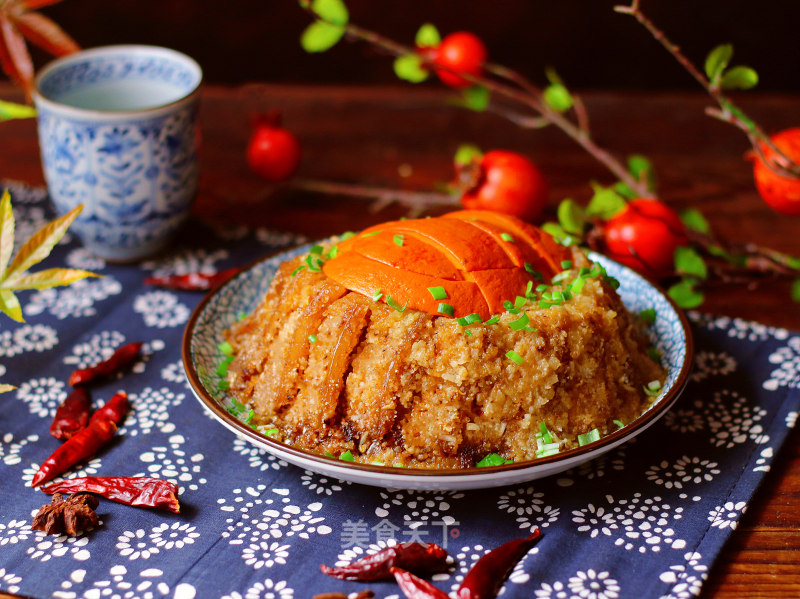
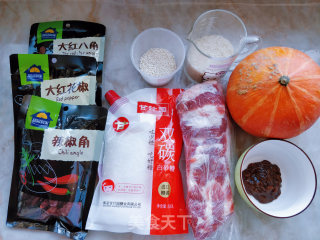
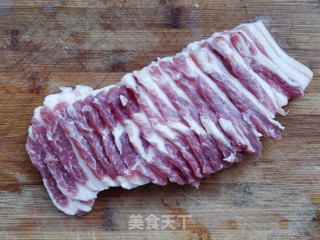
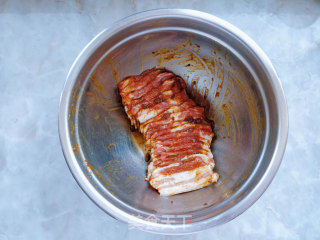
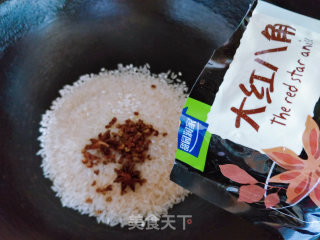
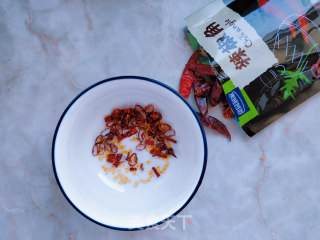
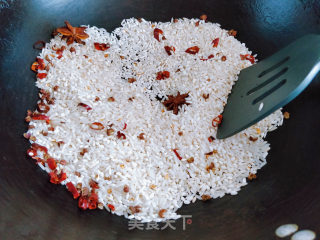
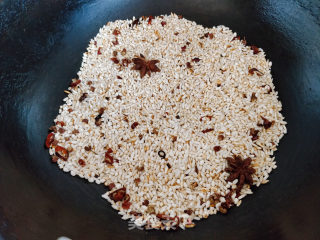
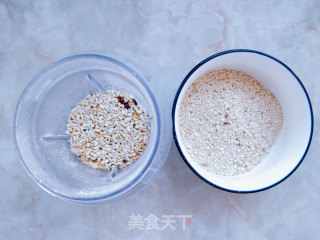
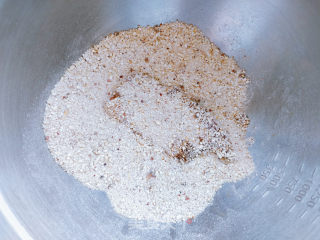

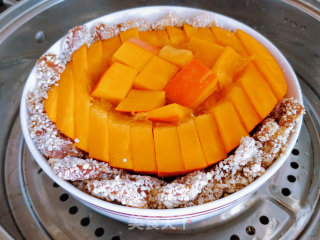
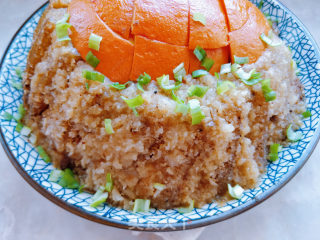
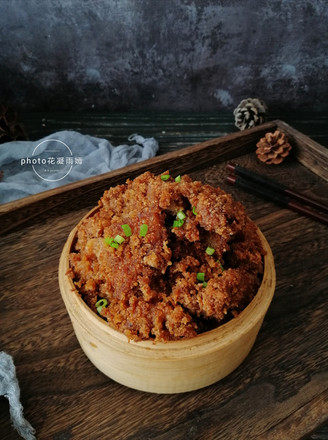
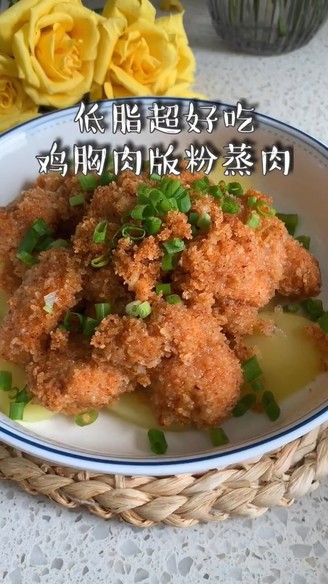
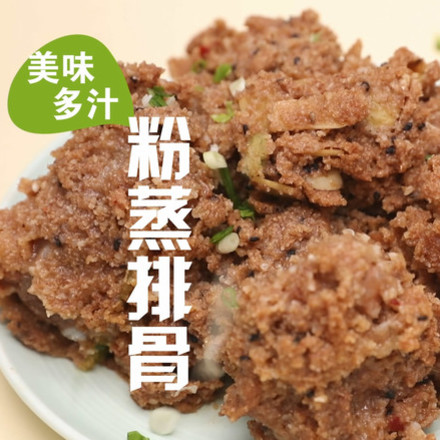
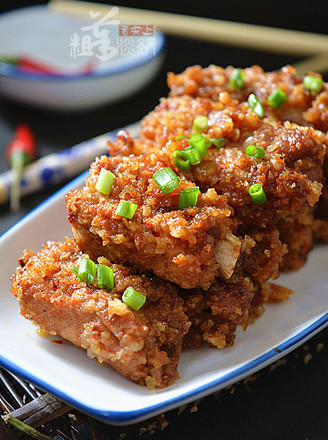

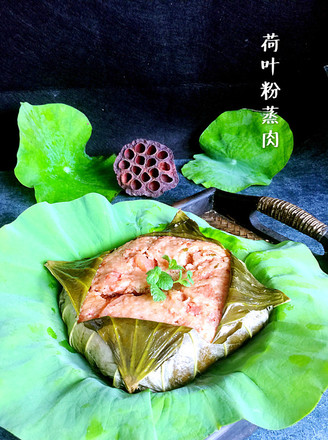
![[fen Steamed Pork] Big Chunks of Meat that are Delicious and Not Greasy in Spring! recipe](https://img.simplechinesefood.com/fd/fd065218eb1d9e2431dcce5a6baeafbd.jpg)
